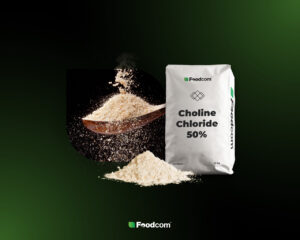- Choline chloride: The market is growing by 6.2% per year due to demand from the poultry and pig sector.
- Beta-carotene: Market stable in Europe, despite rising raw material costs, with a projected value of USD 420 million by 2032.
- Organic sulphur (MSM): Rapid growth of 7% per annum driven by demand in the supplements and cosmetics sector.
- Hurricane Milton: Disruption to fertiliser production in Florida could lead to higher phosphate prices.
Welcome to Partners!
Welcome back to our newsletter!
In October 2024, the choline chloride market is growing steadily, driven by demand in poultry and pig farming, with a projected annual growth rate of 6.2%. The beta-carotene market in Europe also remains stable, although prices fluctuate due to supply chain disruptions and rising raw material costs, with a projected value of USD 420 million by 2032. The market for organosulphur (MSM) is growing rapidly, particularly in the supplements and feed sectors, with a projected growth of 7% per year to 2031. In September 2024, wholesale inflation rose in Japan, but the strengthening yen lowered raw material costs, while Hurricane Milton disrupted fertiliser production in Florida.
Let’s take a look at what else is happening in the market!
PRODUCTS OF THE WEEK
Choline chloride
Since October 2024, the feed grade choline chloride market has witnessed sustained growth, largely driven by its important role in animal nutrition, particularly in the poultry and pig sectors. Growing global demand for meat and poultry products continues to drive demand for this nutrient, which plays a key role in preventing liver disease and promoting optimal growth in livestock. The market is also benefiting from a growing awareness of animal health and feed efficiency, with liquid feed formulations gaining popularity due to their ease of use on large farms. Despite some fluctuations in raw material costs, the market is expected to grow steadily with a projected annual growth rate of around 6.2%.
Beta-carotene
The beta-carotene market in Europe is stable, but prices fluctuate due to rising raw material costs and supply chain disruptions. Demand for natural beta-carotenes in the food and beverage sector continues to grow in 2024, especially in products such as juices and dietary supplements. The market in the food and beverage segment is forecast to reach USD 420 million by 2032. Demand for natural ingredients is also driving the feed sector, where beta-carotene supports animal health.
Organic sulphur
October 2024 The market for organic sulphur (MSM) is growing rapidly in the food, dietary supplements and feed (forage) sectors, in line with the global increase in demand for products that support health. In the dietary supplement sector, MSM dominates, particularly in North America and Europe, where supplements that support joint health and alleviate inflammation are gaining popularity. In the feed sector, MSM is used to improve livestock health, contributing to better animal condition and performance. The MSM market is forecast to grow by 7% per year until 2031, and in Asian markets such as China and India, MSM is gaining ground in the cosmetic and agricultural sectors.
NEWS
Japan’s wholesale inflation falls despite higher demand
Japan’s wholesale inflation rose in September 2024, but a fall in the price of imported goods due to a strengthening yen eased price pressures on raw materials. The Bank of Japan is monitoring whether inflation will continue to be driven by domestic demand or whether it is a temporary effect of favourable exchange rates. Import prices fell for the first time in eight months, providing relief to companies struggling with rising costs. Even so, rising rice prices and tensions in the Middle East, which are pushing up oil prices, could keep inflationary pressures at bay. The Bank may consider further interest rate rises if higher wages boost consumption.
Hurricane Milton disrupts fertiliser production in Florida
Hurricane Milton, which hit Florida in October 2024, caused major disruptions in the fertiliser sector, forcing key manufacturers such as Mosaic and Cargill to close their plants. These closures significantly impacted the phosphate market, particularly in the Tampa Bay area, through which as much as 40% of US phosphate exports pass. The effects of the storm, including devastating storm surges and winds, hampered logistics and deliveries to the domestic and international markets. The devastation has further exacerbated supply issues, which could lead to higher phosphate prices in the coming months. The situation raises concerns about the impact on US agriculture and global fertiliser markets .
![Vital feed ADDITIVES: Beta-carotene and MSM fueling market growth! [61th Edition ADDITIVES Newsletter] Vital feed ADDITIVES: Beta-carotene and MSM fueling market growth! [61th Edition ADDITIVES Newsletter]](https://foodcom.pl/wp-content/uploads/2024/06/Foodcom_SA_Additives_Newsletter_Amino_Acids-1520x760.jpg)





